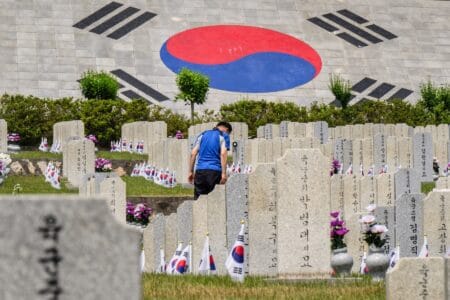July 10, 2025
SEOUL – With South Korea entering the peak season for gastrointestinal illnesses, public health officials are urging heightened vigilance as cases linked to contaminated food and water nearly doubled in the past month.
According to the Korea Disease Control and Prevention Agency on Wednesday, sentinel surveillance at 210 hospitals with 200 or more beds showed a sharp rise in two of the most common bacterial culprits.
Salmonella infections rose from 66 patients in the first week of June to 127 by the fourth week, a 92.4 percent jump. Campylobacter, another leading pathogen in summer, recorded an even steeper trajectory: Related cases increased from 58 to 128 during the same period, more than doubling in four weeks.
Another intestinal infectious disease, Shiga toxin–producing Escherichia coli, known locally as enterohemorrhagic E. coli, infected 133 people between January and June, up 30.4 percent from 102 in the same period last year.
Three patients have developed Vibrio sepsis since the first case was confirmed on May 10; the bacterium flourishes in warm seawater and can cause rapid‑onset septic shock, particularly in people with chronic liver disease or diabetes.
Symptoms
The hallmark of these infections is sudden gastrointestinal distress such as cramps, nausea, vomiting and watery or bloody diarrhea. Mild fever is also common. While symptoms of Salmonella infection appear 6 to 72 hours after consuming contaminated food, Campylobacter infection generally begins 2 to 5 days after exposure.
The latter comes with muscle pain as well, particularly among those with a weakened immune system.
Vibrio sepsis adds chills and rapidly spreading skin lesions. Older adults, heavy drinkers and people with liver cirrhosis, diabetes or weakened immunity may face the greatest danger of complications.
How pathogens spread
Most summer outbreaks trace back to improper food handling in hot, humid kitchens.
Salmonella thrives in eggs and egg products left at room temperature. Cross‑contamination is also common when someone handles infected eggs and then prepares other ingredients without washing their hands.
Campylobacter is frequently found on the surface of raw meat as well as in unpasteurized dairy and untreated water. Campylobacter can easily exist on the surface of raw chicken, and a single splash of poultry juice onto ready‑to‑eat foods is enough to trigger illness.
STEC infections typically originate from undercooked beef, raw produce irrigated with contaminated water, or unpasteurised milk. Once inside the gut, the bacteria can release toxins that cause severe abdominal cramps, bloody diarrhea and, in some cases, kidney failure.
Vibrio vulnificus lives in coastal waters. Eating raw or under‑cooked seafood or allowing seawater to contact an open wound can lead to high fever, precipitous blood‑pressure drops, and, without prompt antibiotics, death.
Steps to stay safe
KDCA advises the public to treat summer kitchens as potential incubators. Hands should be scrubbed with soap under running water for at least 30 seconds before cooking, after handling raw meat or eggs and before eating.
Perishable foods, including marinated meats, sliced fruit and prepared salads, must be kept below 5 degrees Celsius or above 60 C. All seafood, poultry and eggs should be cooked thoroughly.
Tap water should be boiled, and fresh produce either peeled or rinsed well under clean running water.
If two or more people who shared the same meal develop diarrhoea or vomiting, KDCA asks that the cluster be reported immediately to the nearest public health center so that investigators can trace the source and prevent a wider outbreak.
“With forecasts calling for a hotter‑than‑average summer, we must double down on basic hygiene and safe‑food practices,” KDCA Commissioner Jee Young‑mi said. “These illnesses are largely preventable, but once infection occurs, the consequences can be severe.”







